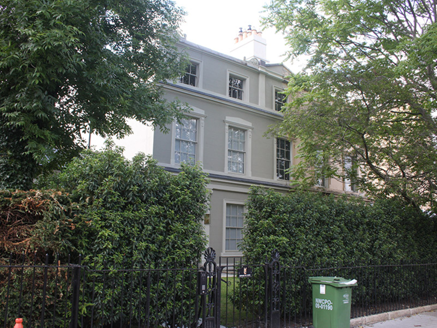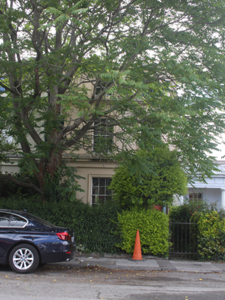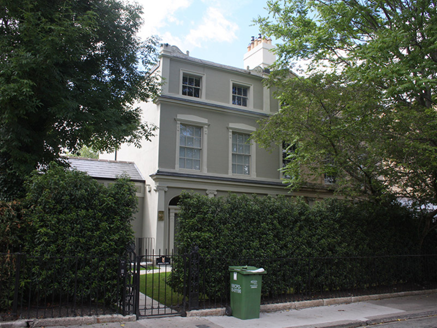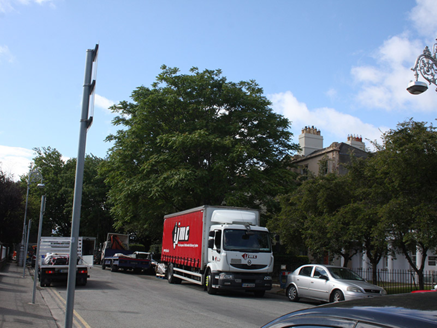Survey Data
Reg No
50110469
Rating
Regional
Categories of Special Interest
Architectural, Artistic, Historical
Original Use
House
In Use As
House
Date
1825 - 1835
Coordinates
316107, 232649
Date Recorded
25/06/2017
Date Updated
--/--/--
Description
Semi-detached two-bay three-storey house over basement, built 1830, as one of pair, with single-storey bay to side (north) elevation. M-profile hipped slate roof having terracotta ridge tiles, concealed by rendered parapet with stucco scrolls having anthropomorphic and foliate decoration, rendered chimneystacks with clay pots. Hipped slate roof to side bay, concealed by rendered parapet having laurel wreath panels. Lined-and-ruled rendered walls, render pilasters to second floor, moulded masonry cornices. Ionic pilasters and entablature to ground floor, rendered plinth course over basement. Round-headed niche with stone sill to ground floor. Fluted Doric columns supporting frieze having triglyphs and metopes, with casts of fighting lapiths and centaurs, having moulded cornice, to front of side bay. Square-headed window openings with moulded render surrounds, those to first floor having shallow pediments over scrolled consoles and cornices, those to ground floor and basement with stone sills. Continuous masonry sill course to first and second floor windows openings. Three-over-three pane, six-over-six pane, and ten-over-ten pane timber sliding sash windows. Elliptical-headed door opening having moulded masonry surround. Doorcase comprising decorative pilasters and panelled cornice. Leaded fanlight, timber panelled door, granite step. Cast-iron gate to front of house, matching railings set on granite plinth wall.
Appraisal
This house is part of Harcourt Terrace, acknowledged as Ireland’s finest surviving group of Regency houses. Exhibiting motifs emblematic of the Ancient Greek revival, this composition was de rigeur at the time of its construction. The metopes of the decorative frieze are based on those from the Parthenon marbles, which had been on display in the British Museum from 1816. The ornamental stucco frontage exudes an air of grandeur and has a unifying effect on the paired form. Formerly overlooking a large wedge-shaped green, the houses were built as a speculative venture by Charles Jaspar Joly, the son of Jean Jaspar Joly (d.1823) who came to Ireland from France as private secretary of Lord William Fitzgerald and acquired land in the environs of what became Harcourt Terrace.







